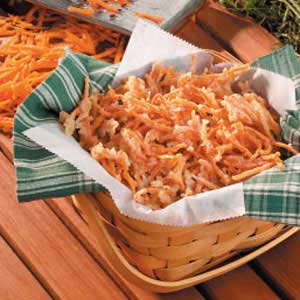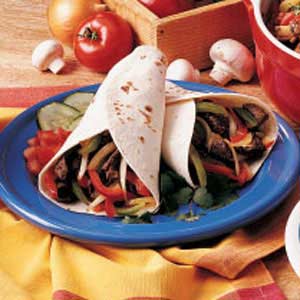**Yosenabe Hot Pot: A Flavorful and Comforting Japanese Dish**
Yosenabe, also known as寄せ鍋, is a traditional Japanese hot pot dish that is enjoyed by people of all ages. It is a versatile dish that can be made with a variety of ingredients, including vegetables, tofu, meat, and seafood. The broth is typically made with dashi, soy sauce, and mirin, and it is simmered until the flavors are well-blended. Yosenabe is a popular dish to serve during the winter months, as it is a hearty and warming meal. There are several variations of yosenabe, each with its own unique flavors and ingredients. Some of the most popular variations include:
* **Classic Yosenabe:** This is the most basic type of yosenabe, and it is made with a variety of vegetables, tofu, and meat.
* **Seafood Yosenabe:** This variation includes a variety of seafood, such as shrimp, scallops, and mussels.
* **Chicken Yosenabe:** This variation is made with chicken, vegetables, and tofu.
* **Pork Yosenabe:** This variation is made with pork, vegetables, and tofu.
* **Kimchi Yosenabe:** This variation includes kimchi, a spicy fermented cabbage dish.
No matter which variation you choose, yosenabe is sure to be a delicious and comforting meal.
YOSENABE (JAPANESE HOT POT)

One of my favourite hot pots, yosenabe is packed with seafood, chicken and vegetables. Unlike shabushabu, you don't need dipping sauces for this as yosenabe is cooked in flavoured soup. You can cook them all and serve, or let people cook piece by piece for entertainment. Cook Time assumes the hot pot is cooked at once.
Provided by Yumiko
Categories Main
Time 35m
Number Of Ingredients 16
Steps:
- Boil Chinese cabbage in a large pot for about 8-10 minutes or until the thickest part of the stem becomes tender. Transfer the leaves from the pot to a strainer and drain.
- Using the same pot and water used for Chinese cabbage, blanch spinach for a minute until the colour of the leaves become bright green colour. Drain in a strainer and run cold water over the spinach to quickly cool it down so that it is no longer warm.
- Hold the bunch of Chinese cabbage vertically and squeeze out excess water. Do the same for the spinach.
- (Please see the photo steps below the recipe for the remaining steps below) Place a bamboo sushi mat (if you have one) or two layers of baking sheets made into a square with the width of the baking sheet on the cutting board.
- One leaf at a time, Chinese cabbage leaves need to be placed horizontally with the inside of the leaves facing up, slightly overlapping each other.
- Starting from the end closest to you, place a Chinese cabbage leaf on the mat/paper.
- Place a second leaf wrong way around so that the root end of the leaf is placed next to the tip of the leaf of the first cabbage leaf. Make sure that two leaves overlap slightly for continuity.
- The 3rd leaf will now be placed in the same direction as the first leaf. Repeat with two more leaves.
- Take half of the boiled spinach leaves and place them horizontally on your end of the Chinese cabbage, leaving a 1cm (3/8") gap.
- Starting from your end of the mat or baking paper, pick up the end of the mat/paper using both hands and start rolling the cabbage slowly using the mat/paper to support. Place the middle fingers and the index fingers onto the vegetables to secure them when rolling.
- Once the mat/paper goes over the rolled part of Chinese cabbage (be this time, Chinese cabbage covered the spinach (see the 3rd photo in the photo steps), move one hand to the outside of mat/paper to support the roll while pulling the mat/paper forward using the other hand.
- When completely rolled, squeeze the roll while the mat/paper is still on the roll so that excess water will be removed while keeping the log shape (excess water will make the soup stock thinner). If you tilt the roll vertically, water drains better.
- Repeat and make one more log. Cut the log into roughly 4cm (1 1/2") disks.
- Mix the Stock Ingredients together in a bowl or a jar.
- Group each ingredient together and place them in a wide shallow pot. I always place prawns and shells in the centre for dramatic effect when cooked.
- Pour the soup stock into the pot and heat over high heat with a lid on. Once it has started boiling, turn it down to medium low heat to simmer for about 5-8 minutes until all ingredients are cooked through.
- Serve immediately.
- Place ingredients on a large plate, grouping each ingredient together, accompanied by a pair of long chopsticks or tongs to pick up the ingredients (particularly seafood and met) and drop them into the pot.
- Add the soup stock into a pot and place it on a portable cook top. Bring it to a boil.
- Let each individual pick the ingredients of their choice and cook in the pot or let someone pick some ingredients and cook them in the pot for the others. You may need to adjust the heat depending on how full/empty the pot is.
- You will need a ladle or a large spoon to pick up delicate ingredients and soup from the pot as well as small bowls for individuals.
- Using individual's chopsticks or a ladle/spoon, take food from the pot into an individual bowl. Add some soup stock with a ladle/spoon to the bowl.
- Add a dash of shichimi togarashi to the bowl, if you are using it.
YOSENABE SEAFOOD AND VEGETABLE HOT POT RECIPE
Steps:
- Put dashi soup stock in a donabe pot or an electric skillet.
- Heat the soup and bring to a boil.
- Season with sake, soy sauce, mirin, and salt.
- Turn down the heat to low. Add salmon and clams in the pot at first.
- Put other ingredients and simmer until softened and cooked through.
- Prepare individual serving bowls for diners and have them take some simmered ingredients in the bowl as they eat.
Nutrition Facts : Calories 797 kcal, Carbohydrate 24 g, Cholesterol 259 mg, Fiber 3 g, Protein 93 g, SaturatedFat 10 g, Sodium 3478 mg, Sugar 7 g, Fat 33 g, ServingSize serves 4, UnsaturatedFat 0 g
YOSENABE HOT POT

This is one of my rare recipes where you need a certain cooking tool. A earthenware pot. You can find one in an Asian market. I have one that I got from an Asian store near my house, it was only $11.00, But that probably varies, since I live in the suburbs.
Provided by Iron Chef Michiba
Categories One Dish Meal
Time 8h
Yield 4 serving(s)
Number Of Ingredients 19
Steps:
- Cut an "X" at the top of the mushroom.
- Cut fish, and chicken into 1 1/2 inches squares.
- Soak clams in salted water for 5 to 6 hours to remove sand and rise well.
- Boil cabbage and spinach lightly.
- Put 3 cabbage leaves down on sushi mat, put par boiled spinach inside and roll.
- Cut into 1 1/2 inch pieces.
- Put Dashi, soy sauce, mirin, and sake in the pot, bring to boil.
- Put chicken, seafood, and vegetables in the order of time required cooking time.
- When cooking time is done, spoon in ingredients, into a bowl, serve with some ponzu-joyu sauce.
Tips:
- Choose fresh and seasonal ingredients: This will ensure that your yosenabe is packed with flavor and nutrients.
- Use a variety of ingredients: This will make your yosenabe more visually appealing and flavorful. Some good options include vegetables, seafood, tofu, and meat.
- Don't overcrowd the pot: This will prevent the ingredients from cooking evenly.
- Simmer the yosenabe over low heat: This will help to bring out the flavors of the ingredients without overcooking them.
- Serve the yosenabe with a variety of dipping sauces: This will allow your guests to customize their bowls to their own liking.
Conclusion:
Yosenabe is a delicious and versatile dish that is perfect for any occasion. It is easy to make and can be tailored to your own taste preferences. With its variety of fresh ingredients and flavorful broth, yosenabe is sure to be a hit with your family and friends.
Are you curently on diet or you just want to control your food's nutritions, ingredients? We will help you find recipes by cooking method, nutrition, ingredients...
Check it out »
#time-to-make #course #cuisine #preparation #occasion #main-dish #asian #japanese #winter #dietary #one-dish-meal #seasonal
You'll also love




/GettyImages-612216620-580ae3b35f9b58564c26217b.jpg)


